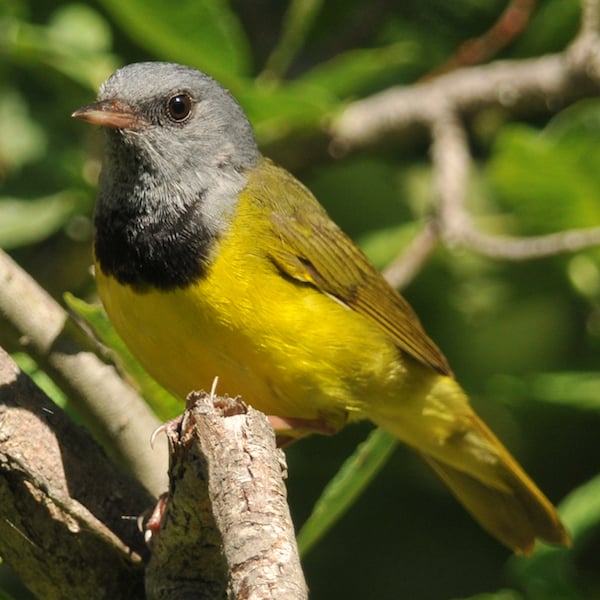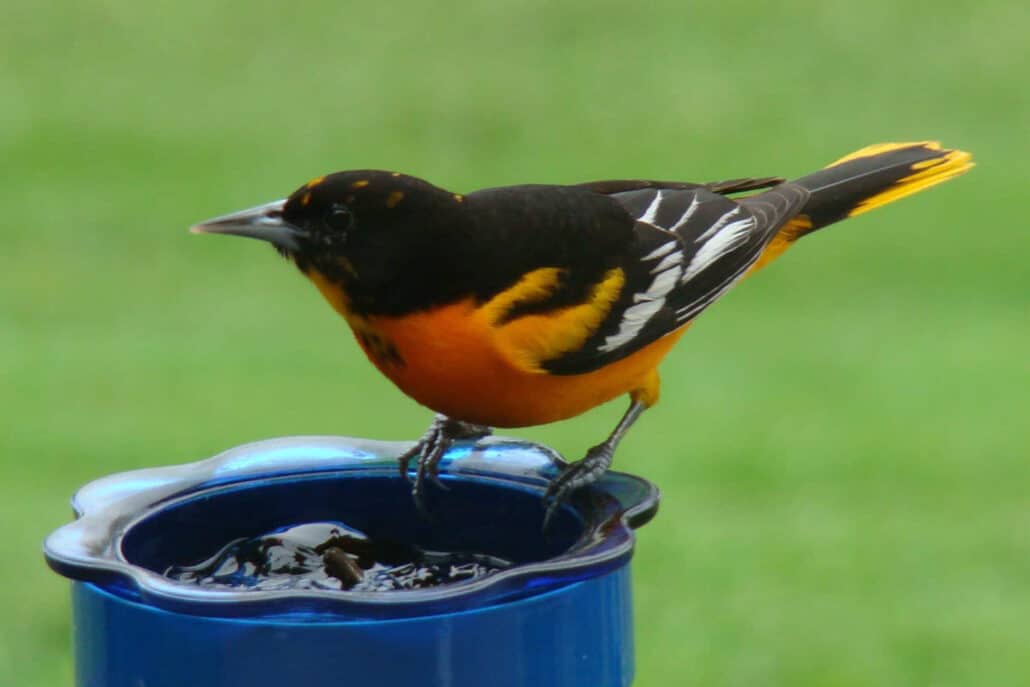Look For
The mourning warbler is a small, elusive songbird with a solid gray hood covering its head and throat with a separate patch of black at the base of its chest. It has a muted olive-green back and wings and a yellow belly. The female mourning warbler is a paler version of the male with more greyish-green upperparts and the same yellow belly.
Listen For
The mourning warbler’s song is a bright, rhythmic series of rolling syllables. It is a loud and musical cheery, cheery, cheery, chorry, chorry with the last pair of notes dipping slightly in pitch.
Find It
The mourning warbler prefers to breed in northeastern parts of the United States around New England and the Great Lakes and in the southeastern parts of Canada. It inhabits second-growth forests with a dense understory as well as the brushes of cutover lands and old deciduous forest clearings.
They are often hidden and hard to observe and prefer hiding in low, thick foliage. When they migrate they travel through Texas and Mexico rather than cross the Gulf of Mexico like some other warblers. They spend the winter in the Central and South America living in the thickets of overgrown lowlands and foothills.
Feeding Behavior
The mourning warbler likely feeds on insects primarily. There is not a lot of documentation recording specific details, but it has been observed eating caterpillars, beetles, and spiders. During the wintertime it sometimes also feeds on protein bodies of cecropia trees. The mourning warbler forages alone in shrubs close to the ground or by making short flights to catch insects midair.
Nesting Behavior
The mourning warbler prefers to make its nest on the ground among weeds, at the base of a shrub, among raspberry or blackberry briars, or among ferns. It sometimes can also be a couple feet off the ground in a bush. The nest is constructed by both sexes and is formed into a bulky, open cup shape made of leaves, weeds, and grass while lined with hair and roots.
The female lays 3-4 creamy eggs with brown speckling or spots. The male feeds the female as she incubates the eggs for 12 days. Both parents feed the young before they leave the nest after 7-9 days, however care may extend up to 4 weeks longer.




